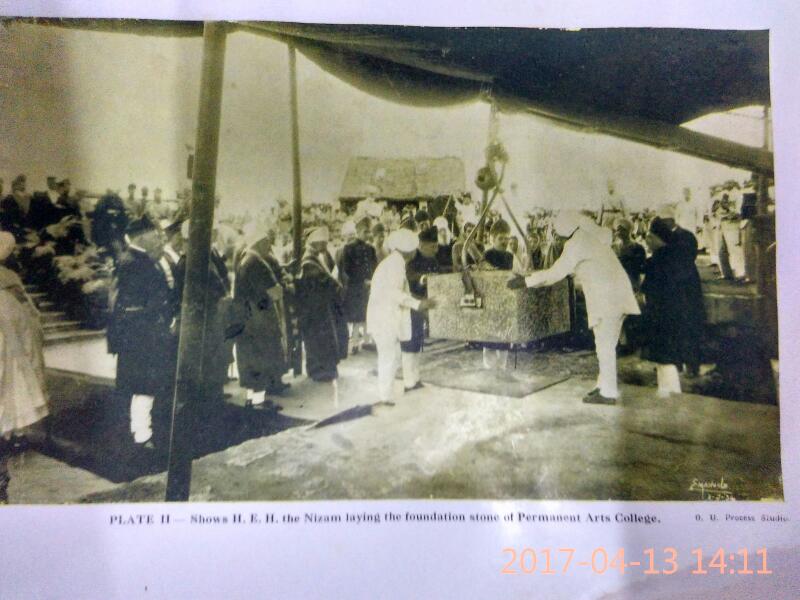Nizam wanted Osmania
University to be located near Musi
DECCAN CHRONICLE.
| C R GOWRI
SHANKER
PublishedApr 16, 2017, 2:56 am IST
UpdatedApr 16, 2017, 7:13 am IST
Adikmet was selected as that was only viable site seen.
Mir Osman Ali Khan laid the foundation of the building designed by Earnest Jasper, a Belgian architect. Ali Raza and Zain Yar Jung were the chief architects.
Hyderabad: The site on which the Osmania University campus is situated did not meet with the approval of Nawab Mir Osman Ali Khan, Nizam VII, founder of the university. He agreed to it very reluctantly.
The Nizam wanted the university to be situated in the heart of the city, on the banks of River Musa (Musi) and near the High Court, according to documents in Urdu preserved in the state archives, Mohammed Abdul Raqeeb, assistant director, Telangana State Archives and Research Institute, told Deccan Chronicle.
The search committee could not find the required land and zeroed in on Adikmet, which was then on the city’s outskirts. The Nizam was not impressed and asked them to continue the search but when it became obvious that 1,400 acres in the vicinity of the High Court was simply not to be had, the Nizam reluctantly settled for the Adikmet land.
The State Archives houses many such interesting documents including firmans in Urdu/Persian, pertaining to the building designs, selection of land, construction of the university and allocation of funds. It also has a collection of rare photographs, says Zareena Praveen, director of the institute.
The search committee could not find the required land and zeroed in on Adikmet, which was then on the city’s outskirts. The Nizam was not impressed and asked them to continue the search but when it became obvious that 1,400 acres in the vicinity of the High Court was simply not to be had, the Nizam reluctantly settled for the Adikmet land.
The State Archives houses many such interesting documents including firmans in Urdu/Persian, pertaining to the building designs, selection of land, construction of the university and allocation of funds. It also has a collection of rare photographs, says Zareena Praveen, director of the institute.
Farmans are royal orders, and those issued in the Asaf Jahi period, including those of the sixth Nizam, Mir Mahboob Ali Khan, and Mir Osman Ali Khan, the seventh Nizam, from 1901 to 1950, have been preserved in the State Archives. They are in Persian and Urdu.
There is a hukm dated April 26, 1917, which established the university in Hyderabad and named it Osmania University, with Urdu as the main language and English as a compulsory subject.
There is a hukm dated April 26, 1917, which established the university in Hyderabad and named it Osmania University, with Urdu as the main language and English as a compulsory subject.
Another hukm dated July 17, 1919, granted approval for the monogram with “Ain”, an Arabic alphabet, in the centre, and the state colour of yellow. A letter written by Rabindranath Tagore, dated January 9, 1918, is among the documents in the archives.
There is a firman to academicians who were preparing the syllabus the university was to follow that insisted that nothing should be published which hurts religious sentiment of people and creates a rift in society.
There is a firman to academicians who were preparing the syllabus the university was to follow that insisted that nothing should be published which hurts religious sentiment of people and creates a rift in society.
Photos/documents courtesy:
Telangana State Archives and Research Institute
Hyderabad












No comments:
Post a Comment